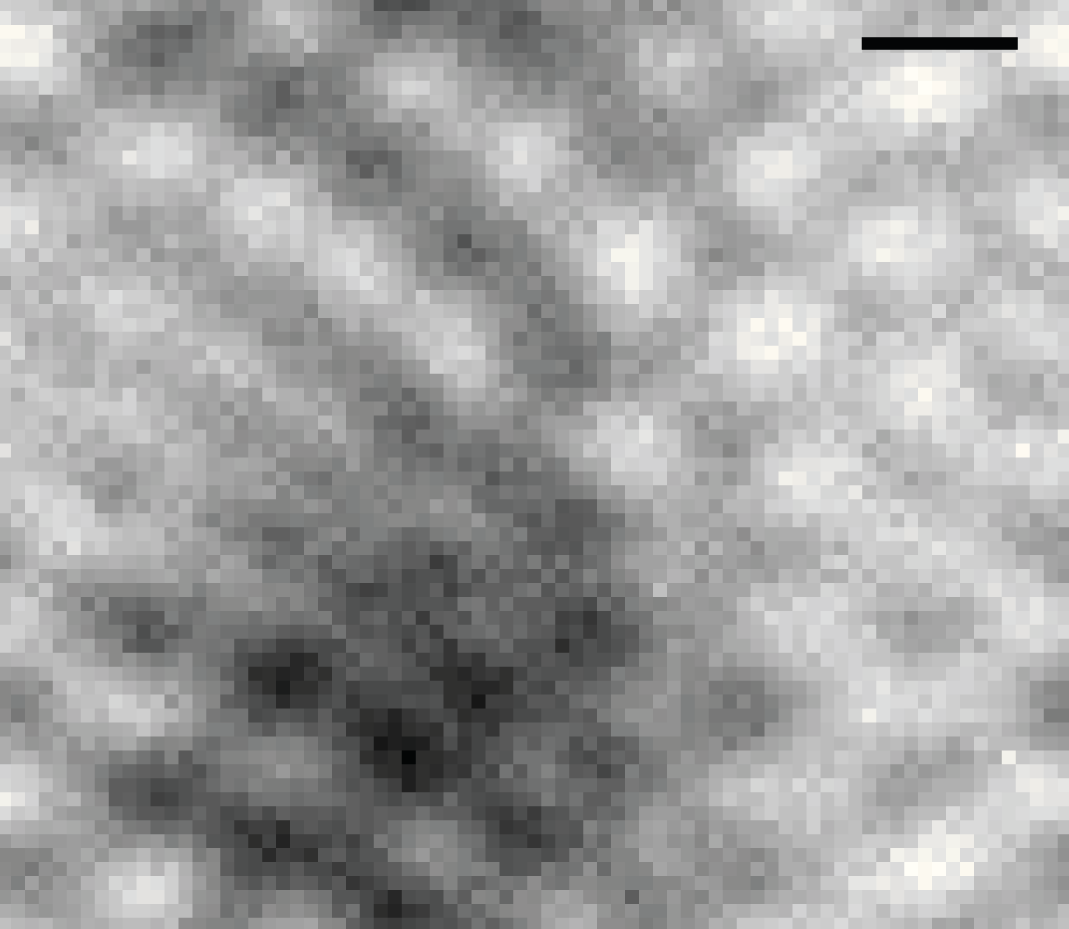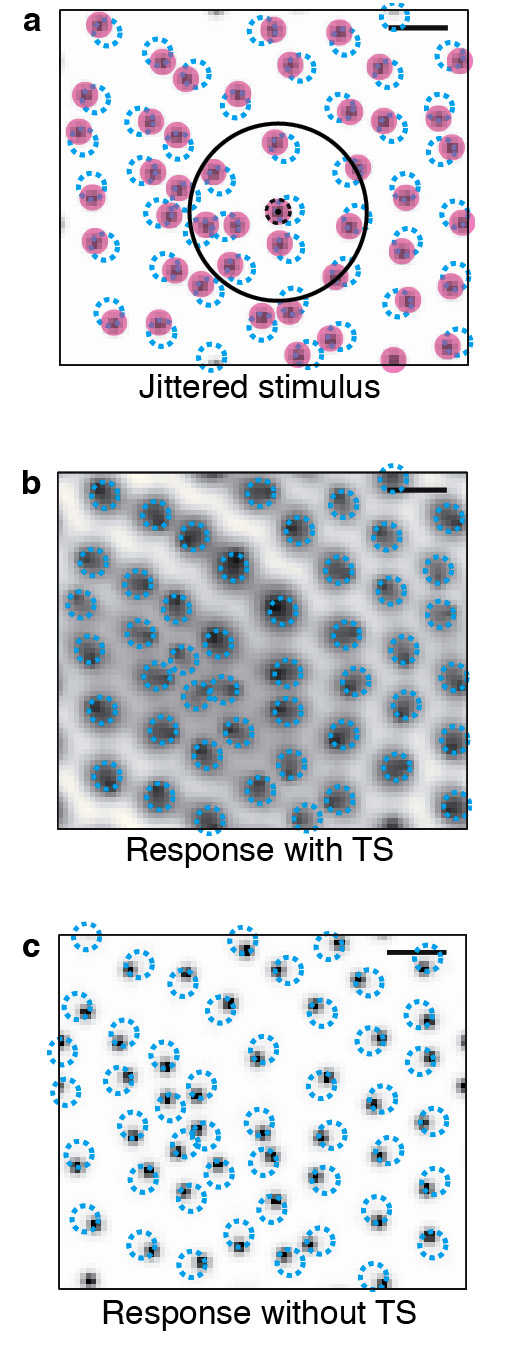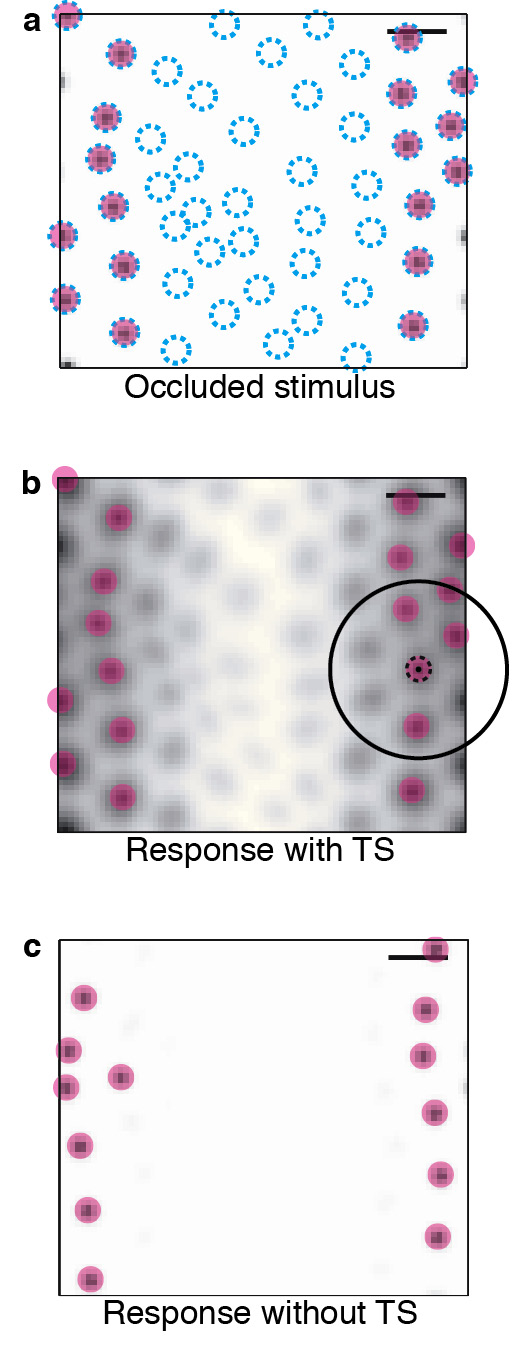Transient Synchrony
Computation and pattern formation with oscillations
20th April, 2115Figure 1

Figure 1
Figure 2

Figure 2
Figure 3

Figure 3
Transient Synchrony is a new mechanism for embedding auto-associative properties in recurrent networks of neurons, with parameters that are plausible for cortex. This mechanism does not rely on imposing patterned fixed-points on network activation patterns, does not rely on reaching a stable equilibrium state, and does not rely on large-scale orthogonal inhibition between embedded activity patterns.
Instead, sub-populations within an oscillatory network of linear-threshold neurons briefly synchronise their activity (hence Synchrony), then return to a desynchronised state (hence Transient). Our model explains the emergence and dynamics of spontaneous patterned activity in the visual cortex of both cat and monkey (Kenet et al. 2003).
We built a sheet model of the superficial layers of cortex, with realistic spatial patterns of synaptic connections across the cortical surface. This implies strong, local inhibitory connections; weaker lateral excitatory connections; and very weak, patterned long-range excitatory projections (the superficial patch system). A population of inhibitory neurons with slow time-constants of activation promotes oscillatory dynamics within the network.
When noise is injected into this network to simulate cortical spontaneous activity, the network expresses spatially-patterned activity states (see Fig. 1). These states correspond to the embedded patterned excitatory projections of the simulated superficial patch system. The auto-associative properties of the mechanism are demonstrated in Figs. 2 and 3 for pattern correction and pattern completion, respectively. In all cases, when the network is placed in a parameter regime that prevents synchronisation then the auto-associative properties are not expressed, even though the synaptic connections in the network are unchanged.
Masters projects and collaboration
There is plenty of work still to do in characterisation of the models, as well as theoretical analysis of the mechanism via simple networks. We also need further analysis and simulation performed on more advanced computational properties. Please send an email if you are interested in collaborating on this project, or if you are interested in using this as a Masters-level research project. Masters projects require a six-month commitment.
Publications
We are preparing a manuscript for submission.
Funding
This work was supported by the European Commission [FP6 2005-015803 DAISY to DRM and RJD]; and the John Crampton Travelling Scholarship to DRM.